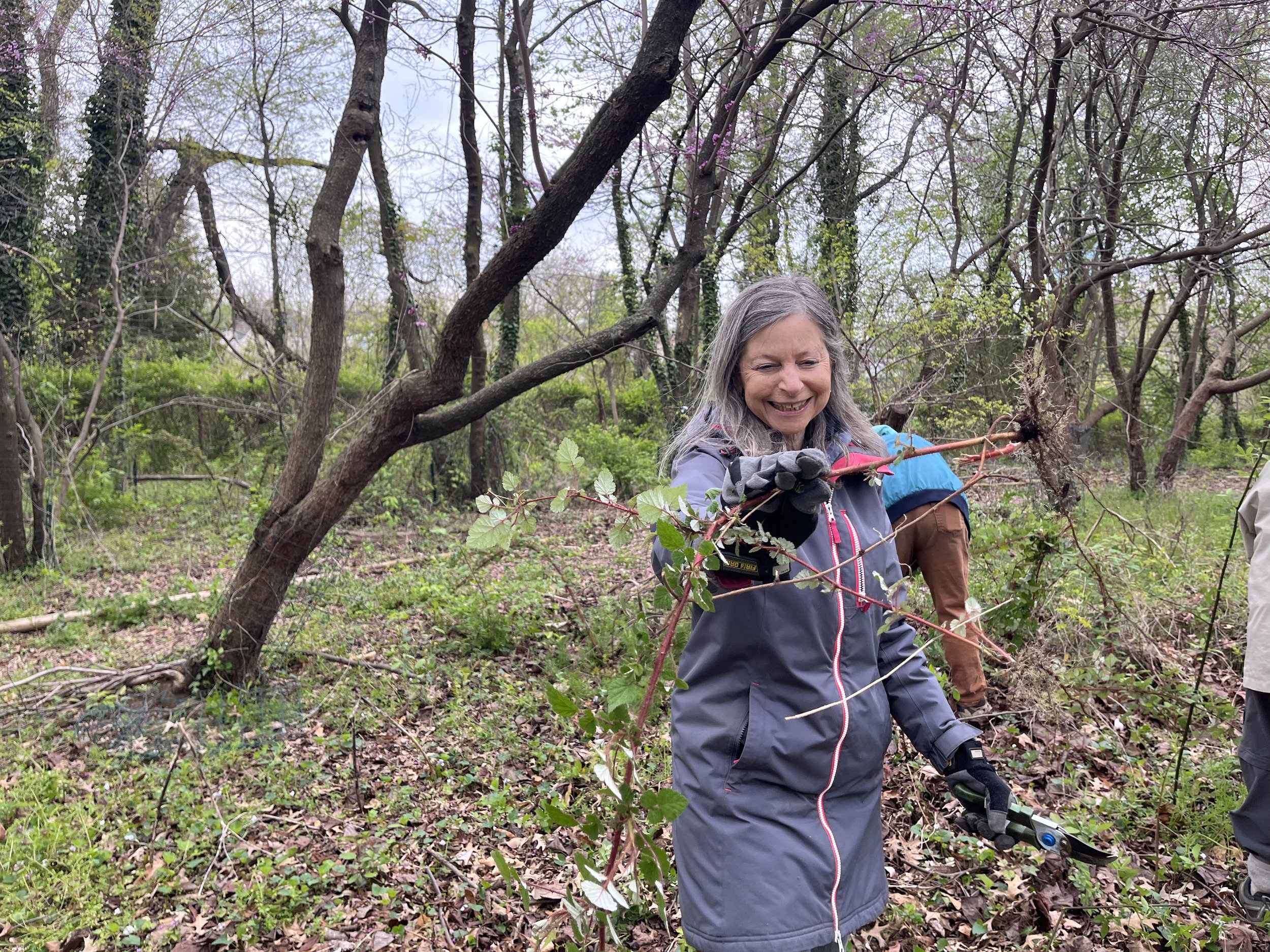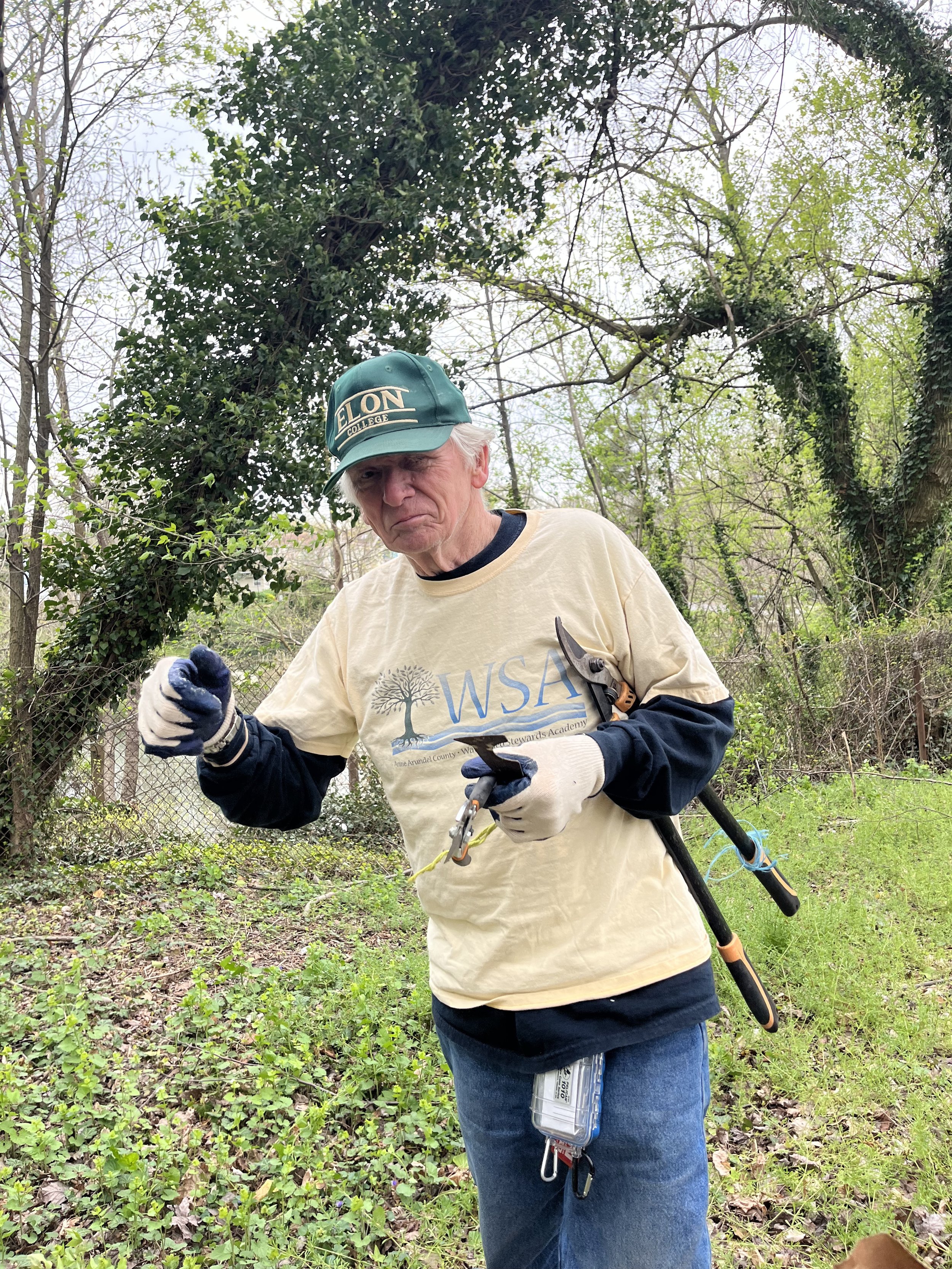2nd ANN-ual Day of Maintenance
On Saturday April 13th, 34 volunteers gathered for the 2nd ANN-ual Day of Maintenance to honor the legacy, impact, and hard work of Watershed Steward Ann Jackson, whom we sadly lost in 2022. You can read more about Ann, her dedication to maintenance, and last year’s event here.
This year, the project site was Native Plant Demonstration Gardens and Groves, a Chesapeake Ecology Center (CEC) project located at Mary Moss @ J. Adams Academy in Annapolis. The project was designed and implemented under the leadership of Zora Lathan. When Zora reached out to Suzanne to ask for support maintaining the project, just as we were starting to plan the 2nd ANN-ual Day of Maintenance, we knew it was the perfect fit!
Here's why:
Maintenance: It's a huge project, right on College Creek, and was in need of a lot of maintenance. Installation began in 2003, and invasive plants had taken over portions of the project. We know that many hands make lighter work.
Simple: There are a few species of invasives we chose to focus on removing. This meant participants would be able to have a big impact fairly quickly, and be a species-specific experts by the end of the morning!
Children: This project is located at an Anne Arundel County Public School site. Ann loved working with children, and children are our future (and current!) environmental Stewards!
Connections: WSA is a hub of connections, and so is this project! The partners that were involved in the beginning, in the time since, and the future illustrate that strength and value of community and working together!
Momentum: We got the momentum started, and are counting on Stewards and other locals to continue it!
Here’s a recap of the day, by the numbers:
20,000 sq. ft. of invasive plants removed including:
Wine berry
Garlic Mustard
English Ivy
Bush honeysuckle
Japanese honeysuckle
Multiflora Rose
Privet
7,264 sticks (approximately), gathered and used to line and redefine a path
101 trees saved from ivy
20 lbs of trash
18 rotten easter eggs (well, they were plastic but littering is rotten!)
4 Rainscaping signs replaced
1 talented woodworker - Brad Knopf built a custom tabletop to replace the old weathered one and reattached the rainscaping signs to their original home at the path entrance.
1 mascot - Ever the naturalist, Lindsay Hollister brought along a rescued and sick box turtle whom we all fed earthworms throughout the day
A special thank you to these wonderful people who helped lead the day:
Mike McCormick
Amy Clements
Juliet Page
Brad Knopf
Jim MacNicholl
Lara Mulvaney
Lindsay Hollister
Cindy Wells
Flip through the photo slideshow below!









About Zora Lathan:
Zora Lathan is a local environmental leader and the founder of the CEC. She is a long time partner and friend of WSA and has had a big impact. The term "rainscaping" has become synonymous with WSA, and she is the one who popularized and elevated that word in the local environmental community.











































